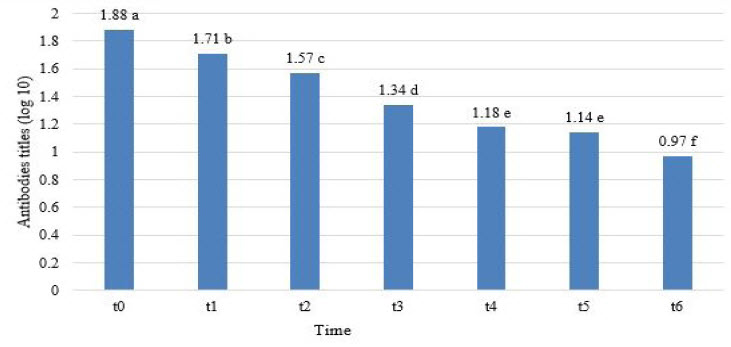Transfer colostrum of passive immunity by antibody in Murrah calf buffalo
Keywords:
Bubalus bubalis, buffaloes, BoHV-1, viral disease, colostrum, IBR/IPVAbstract
The predominant buffalo in southwesten, São Paulo, Brazil is the Murrah. The greatest parts of the farms that explore the buffalo milk production in this region is compound by families and their products are sent to specialized farms. This study was developed in a mixed farm situated in a town called Alambari- São Paulo, specialized in the production of Murrah buffalo milk with 21 animals, born between March and May 2017. Samples of blood were taken between 24 and 48 h from the birth, each 15 days and by the day they stopped sucking completely (in the 91th daylife). We collect blood in 10 ml vacuum tubes without anticoagulant to obtain serum with a coagulant substance, by pucture of the jugular vein. Through the buffalo’s calves blood serum by virusneutralization, we could find 91.30% of reagent calf buffaloes for the BoHV-1 (bovine alphaherpesvirus type 1, etiologic agent of IBR/IPV (infectious bovine Rhinotracheitis/Vulvovaginitis- IBR/IPV) in the first two days of life. The Geometric Media Titles (GMT) of antibodies for the BoHV-1 reduced a lot by the time of 0 (1.88) to the time of 6 (0.97) (P<0.0001) showing effective transference of passive immunity after having colostrum for buffalo calves with the persistence until three months old. Considering that most of buffalo calves were reagent for BoHV-1 after drinking colostrums, it was possible to deduce that there is a great occurance of IBR/IPV and viral activity for this agent, once buffalo calves received colostrum and buffaloes are not vaccinated against IBR / IPV. Therefore, it can be concluded that the mothers suffered infection and transferred antibodies to the calves.
Downloads
Metrics





.png)








